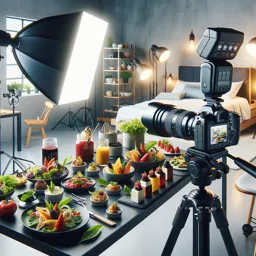Introduction
Portrait photography is a timeless art form that captures the essence and individuality of a person. While there are various approaches to portraiture, shooting with natural light offers a unique and compelling aesthetic. In this article, we’ll delve into the essentials of natural light portrait photography, exploring techniques, tips, and best practices to help you create stunning portraits without artificial lighting equipment.
Understanding Natural Light
Natural light refers to sunlight, whether direct or indirect. It can be soft and flattering or harsh and dramatic, depending on the time of day, weather, and location. Mastering how to use available light is key to creating beautiful, natural-looking portraits.
- Golden Hour: The period shortly after sunrise or before sunset provides warm, diffused light ideal for portraiture.
- Shade: On bright days, shooting in open shade limits harsh shadows and prevents subjects from squinting.
- Overcast Days: Clouds act as a natural softbox, diffusing sunlight and producing gentle shadows.
Choosing the Right Location
The environment plays a significant role in natural light portrait photography. Look for backgrounds that complement your subject without being distracting. Parks, gardens, alleyways, and urban spaces all offer unique backdrops. Pay attention to how the light interacts with your location throughout the day.
Working with Your Subject
Communication is crucial for capturing authentic expressions. Encourage your subject to relax and guide them with simple prompts or poses. Consider positioning your subject so the light falls evenly across their face, creating soft shadows and enhancing facial features.
Camera Settings and Equipment
- Lenses: Prime lenses (such as 50mm or 85mm) are popular for portraits due to their flattering focal length and wide apertures.
- Aperture: A wide aperture (e.g. f/1.8 – f/2.8) creates a shallow depth of field, making your subject stand out against a softly blurred background.
- ISO: Use the lowest possible ISO for minimal noise, increasing it as needed in lower light conditions.
- White Balance: Set your white balance to match the lighting conditions for accurate skin tones.
Tips for Stunning Natural Light Portraits
- Observe how the light shifts throughout your shoot and adjust your composition or subject’s position accordingly.
- Use reflectors (even improvised ones like a white sheet) to bounce light and fill in shadows.
- Experiment with backlighting to create ethereal rim lighting around your subject’s hair.
- Try window light for indoor portraits—north-facing windows often provide the most consistent illumination.
- Review and adjust settings on the spot; slight tweaks can make a big difference in the results.
Post-Processing Considerations
Editing can enhance the natural beauty of your portraits. Adjust exposure, whiteness, contrast, and skin tones while retaining a natural look. Avoid over-processing, as the strength of natural light portraits often lies in their authenticity.
Conclusion
Natural light offers endless possibilities for portrait photographers. By understanding light, choosing thoughtful locations, and connecting with your subject, you can create immersive, striking portraits that capture true personality and emotion. Practice regularly and don’t be afraid to experiment—your signature style will evolve along the way.
































